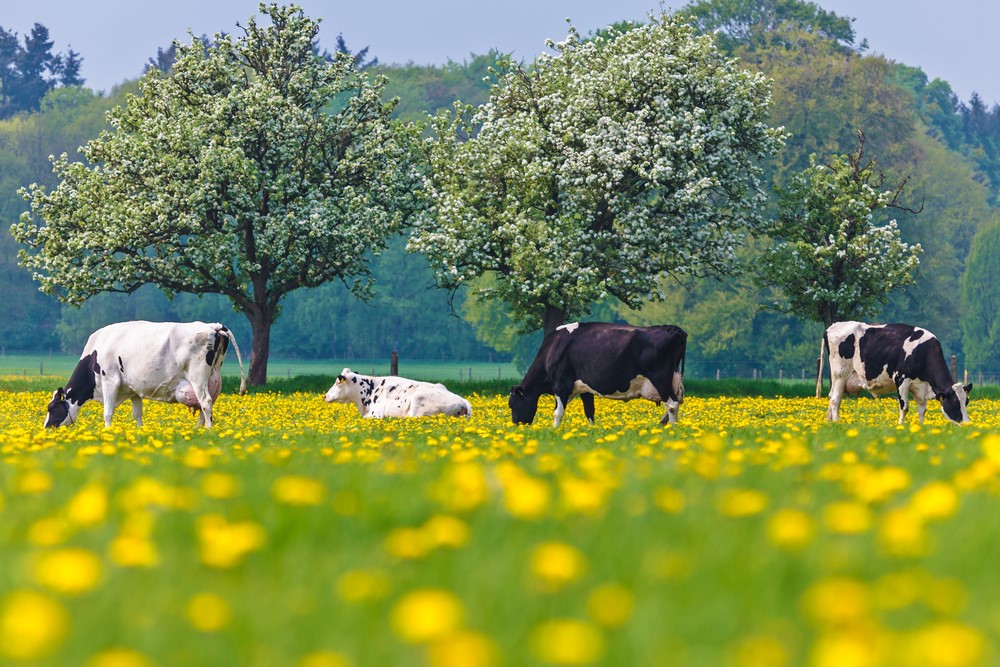Nature-based Solutions for Climate Resilient and Circular Food Systems
This is part 8 of a blog series on food systems. This article was written by Lotte Caarls, Maria Groot and Marjolein Sterk.
As the world seeks to build back from the current COVID-crisis, it is critical to preserve biodiversity and to invest more in Nature-based Solutions. Since all life is interdependent, the threatening extinction of up to a million species is a great loss for all ecosystems involved. What does this wipeout of species have to do with the food we eat?
Nature-based solutions (NbS) are defined by the International Union for Conservation of Nature (IUCN) as “actions to protect, sustainably manage, and restore natural or modified ecosystems, that address societal challenges effectively and adaptively, simultaneously providing human well-being and biodiversity benefits”. A report from the Intergovernmental Science-Policy Platform on Biodiversity and Ecosystem Services (IPBES; 2019) forecasts that, based on current trends, up to a million species may become extinct in the coming years.
Growing population pressure and new available technologies has led to a drastic change of our food and agricultural system over the last decades. An intensification of irrigation, nutrient and chemical inputs in agriculture took place to cultivate highly productive crop breeds. This resulted in a shift away from small, diversified fields towards homogenous fields resulting in a tremendous decline of biodiversity. And those systems are less climate resilient and more sensitive to pests and diseases.
The long-term sustainability of our food systems relies on the application of biodiversity as a NbS in agriculture — the diversity of crops, their genetics and their wild relatives. Trees, animals, microbes and other species that contribute to food production and nature in general. At the landscape and field level, this can be achieved through diversification, not only over time through crop rotation, but above all spatially. Thereby diverse niches are created where several organisms can coexist and create a balanced ecosystem.
Creating spatial crop diversity in farming systems
Various approaches exist to creating spatial crop diversity in farming systems, such as combining multiple varieties of the same crop within a field, or by growing different species next to each other such as row or strip cropping. Diversification may also include woody species like in agroforestry. Each type of diversification can differ in the way it is managed and the kind of biodiversity it promotes.
This diversity, which evolved in time, is a key component of healthy diverse diets and fit consumers’ preference. It has also shown to be a critical component in the route towards circular, resilient and valued farming systems.

Now, what we need are mechanisms and tools that can help us to translate our current understanding of biodiversity benefits into commitments and actions that support transitions towards sustainable food systems. As an example, pest insects can be fought by using their natural enemies, such as carnivores or parasitic wasps. However, for that to work efficiently, the biodiversity of insects and their host plants in the surroundings of the farm needs to be sufficient.
We are investigating what is necessary in the landscape around a field for that to happen. In addition, we study how the attraction of these natural enemies could be improved, using wild relatives of crop species that are perhaps better at attracting natural enemies of their pest insects than crops used today. When identified, these species can be used in an intercropping system to attract these natural enemies, as a Nbs, to the field.
Cows in herbal pastures
For dairy cattle there is growing interest in herbal pastures, in which a variety of herbs contribute to animals’ health through plant secondary metabolites, but also to gut health by a more biodiverse diet. Biodiversity in the diet is mirrored in the biodiversity of the gut and rumen microbiome, leading to more resilient animals. Moreover, biodiverse pastures also have deeper root systems, more diverse soil life, better water containing capacity and are more drought-resistant.
With this research we contribute to the newly launched Wageningen Biodiversity initiative in which Biodiversity in Food Systems play a pivotal role. The initiative aims to make a strong and significant contribution to bending the curve of biodiversity loss back in a positive direction.
Read more:
- Nature-based Solutions for Climate Resilient and Circular Food Systems
- WUR research theme: Food systems
- WUR research programme: Food security and the value of water
- Applying a food system approach: the key to Zero Hunger in 2030
- Theme Biodiversity”

